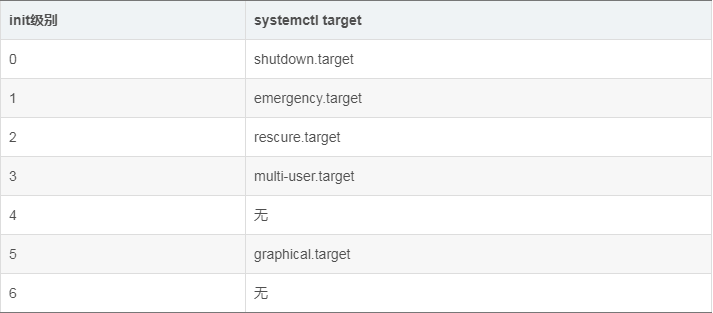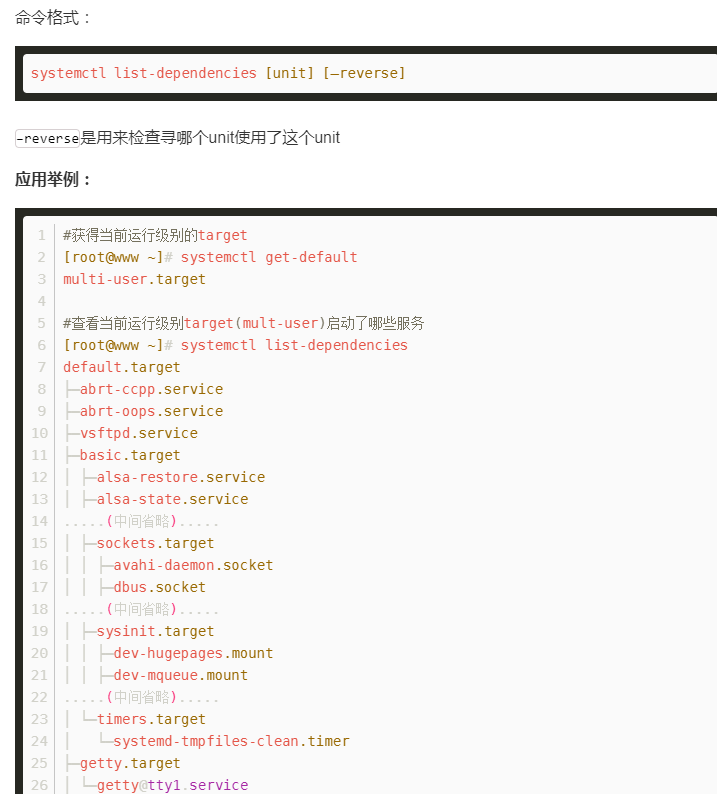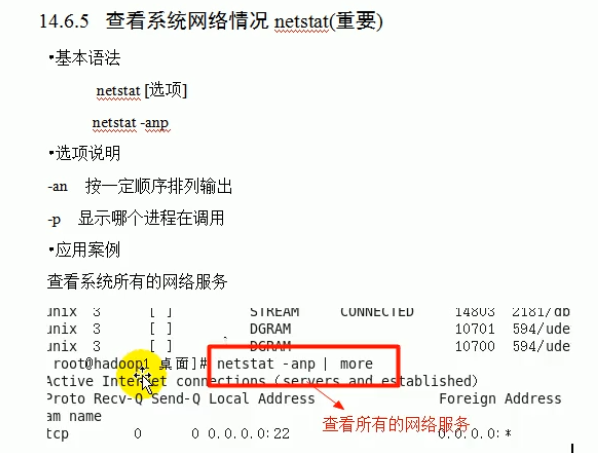服务命令(systemctl的使用)
常用的service与systemctl命令的对比

应用举例:
●start:开启服务
●stop:停止服务
●status:参数来查看服务运行情况
●restart:重新加载服务
应用举例·;
#启动网络服务
systemctl start network
#停止网络服务
systemctl stop network
#查看网络服务状态
systemctl status network
#查看防火墙
systemctl status firewalld
chkconfig命令与systemctl命令对比
设置开机启动/不启动

查看系统上所有的服务
查看系统服务应用举例:
systemctl [command] [-type=TYPE] [-all] 注意——type和——all符号 参数详解: command -list-units:依据unit列出所有启动的unit。加上-all才会列出没启动的unit; - list-unit-files:依据/usr/lib//systemd/system/内的启动文件,列出启动文件列表 -type=TYPE 其中TYPE主要有service,socket,target
特殊用法:
systemctl # 列出所有的系统服务 systemctl list-units #列出所有启动unit systemctl list-unit-files #列出所有启动文件
systemctl list-unit-files | grep enable #过滤查看启动项
systemctl list-unit-files | grep sshd #过滤查看某服务的状态
systemctl命令用法 1)systemctl is-active [unit type] #查看服务是否运行 2)systemctl mask [unit type] #注销指定服务 3)systemctl unmask [unit type] #取消注销指定服务
设置系统运行级别
运行级别对应表

设置运行级别
●get-default:取到当前的target ●set-default:设置指定的target为默认的运行级别 ●isolate:切换到指定的运行级别 ●unit.target:为上表中列出的运行级别

使用systemctl分析各服务之前的依赖关系

关闭网络服务
systemctl stop sshd #停止sshd(22端口)
systemctl disable sshd #禁止开机启动
关闭防火墙
Centos7中关闭防火墙:
systemctl stop firewalld
Centos7中允许开机自动启动:
systemctl enable firewalld
Centos7中禁止开机自动启动:
systemctl disable firewalld
Ubuntu中关闭防火墙:
systemctl stop ufw
Ubuntu中允许开机自动启动:
systemctl enable ufw
Ubuntu中禁止开机自动启动:
systemctl disable ufw
查看系统网络与监控(netstat)


查看已经监听的端口:
netstat -antp


